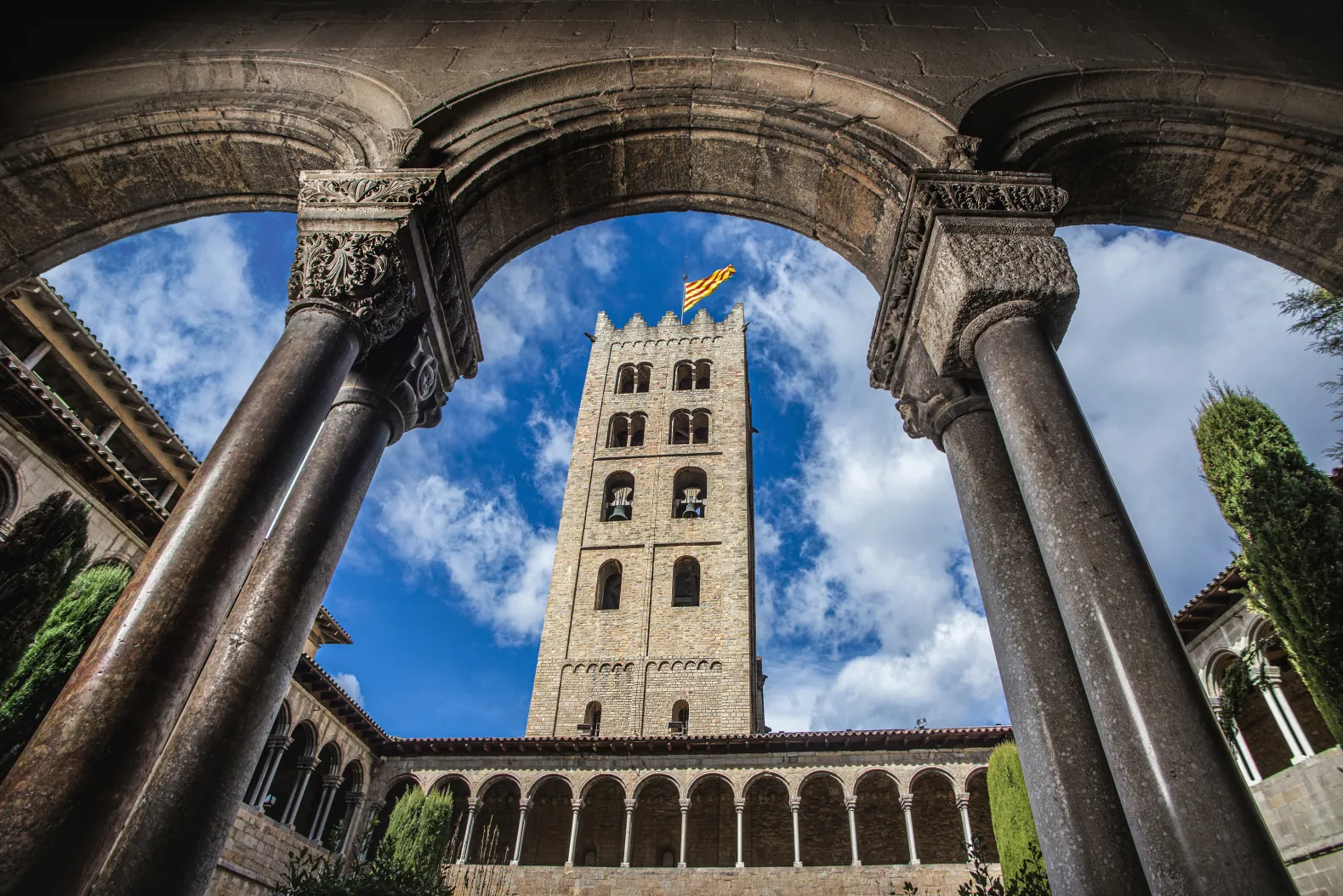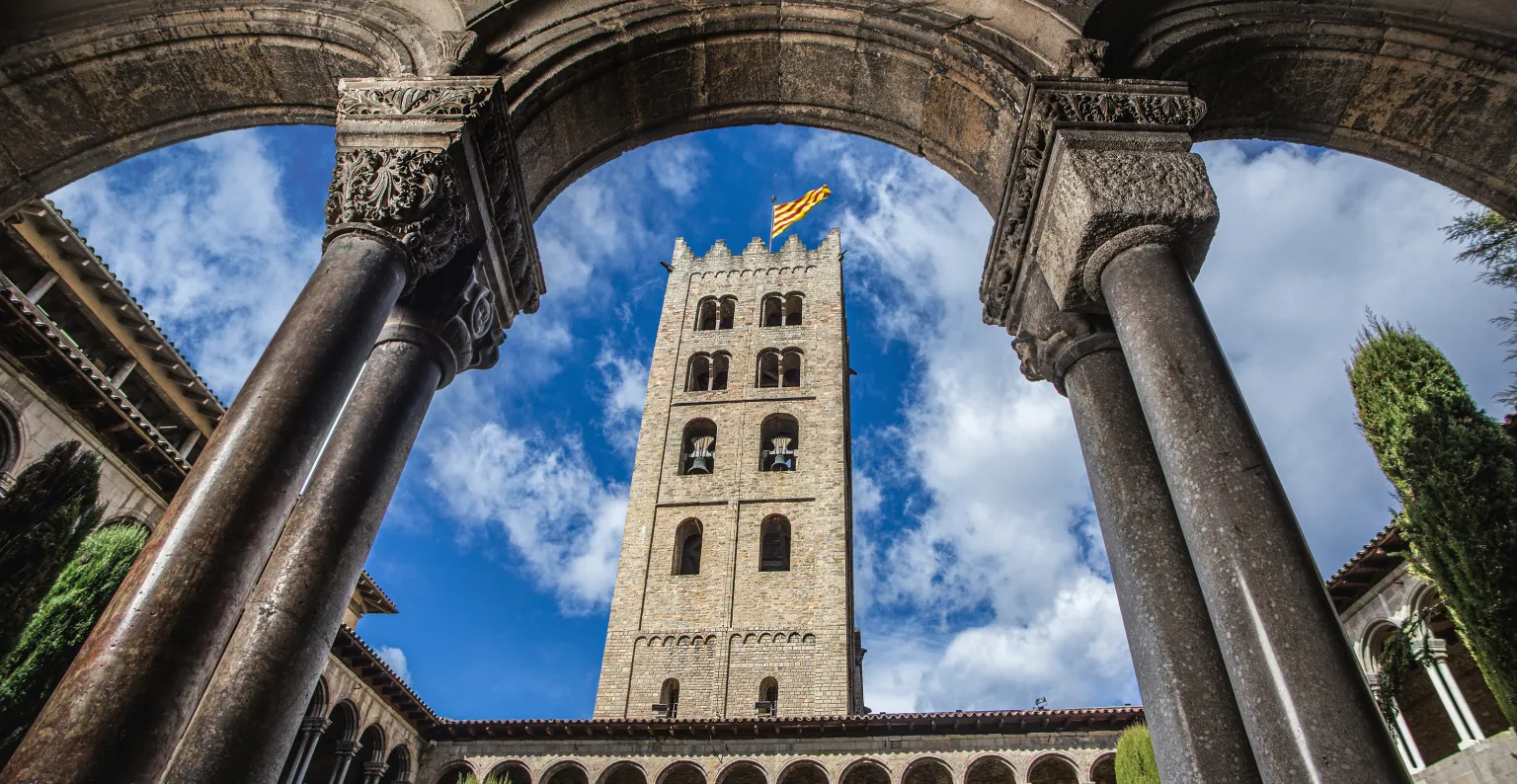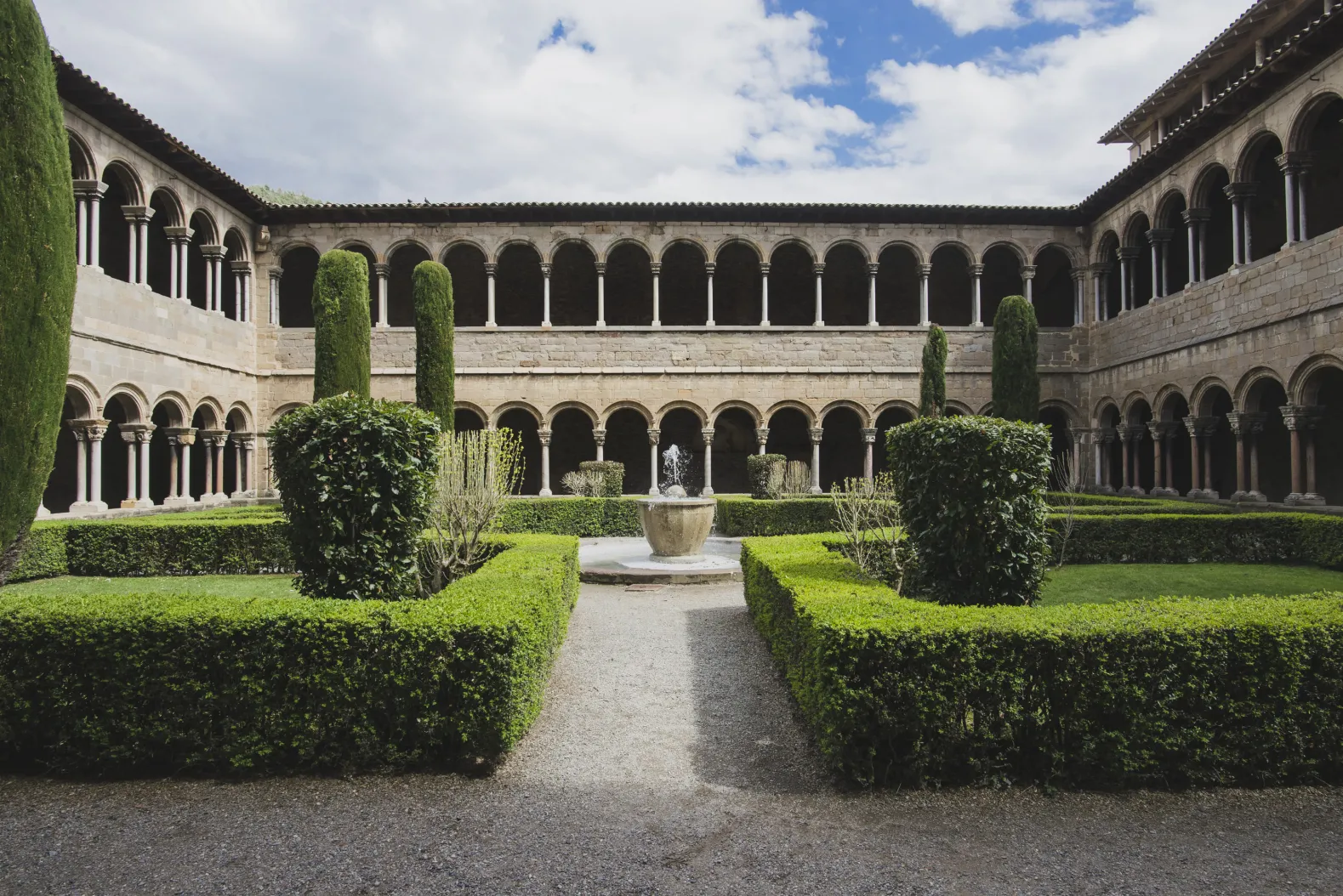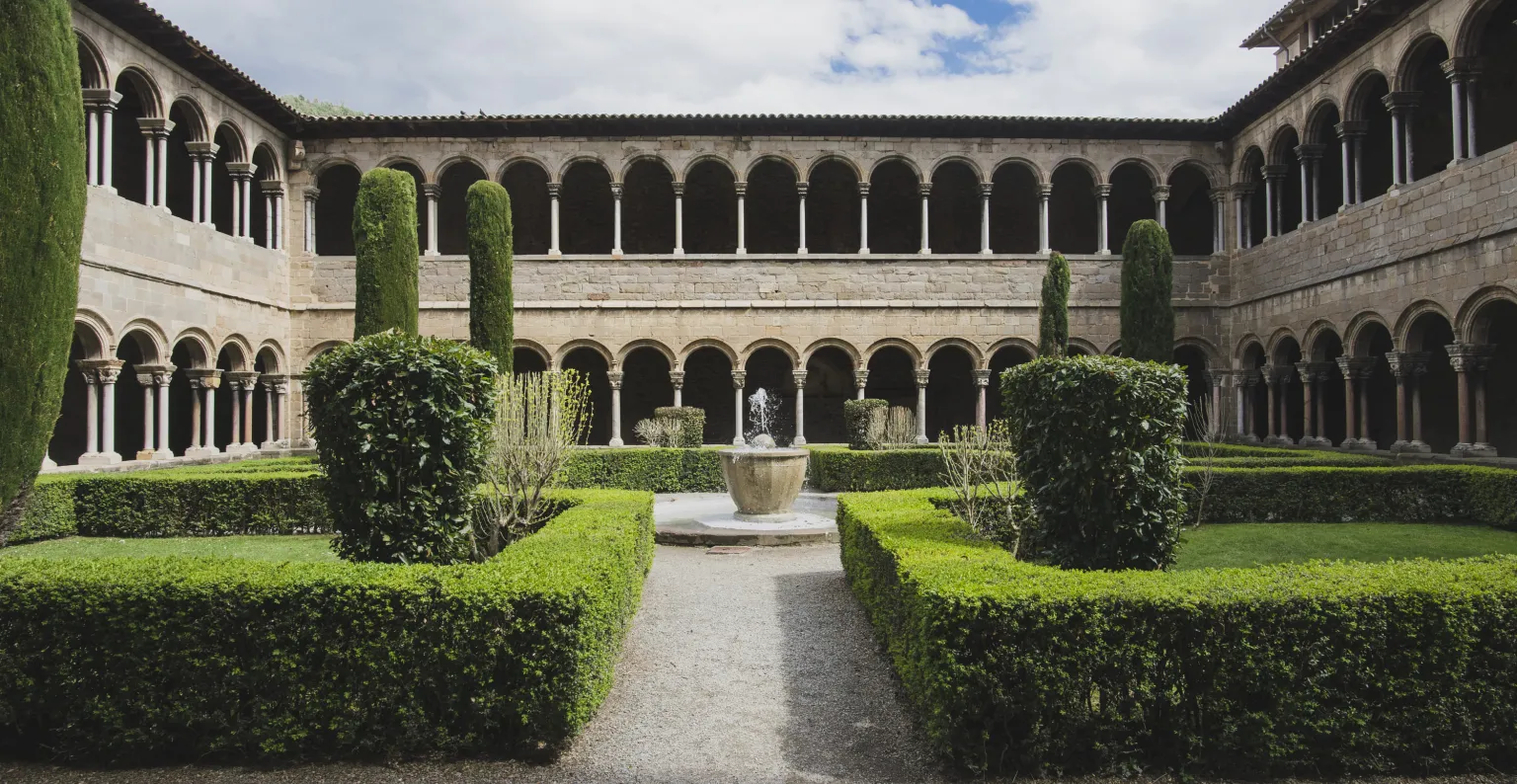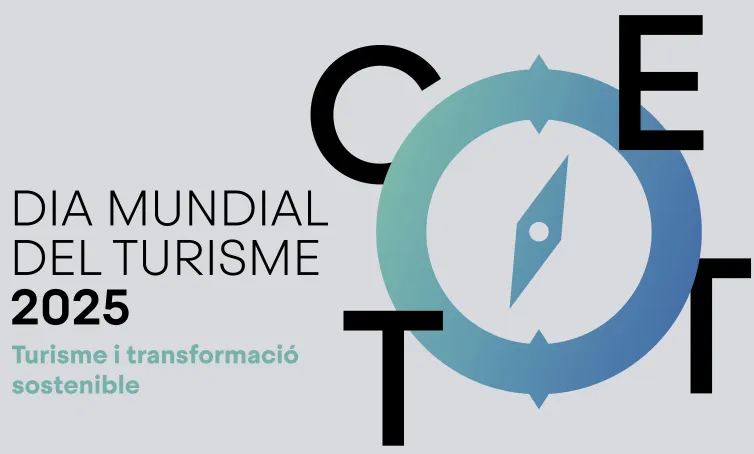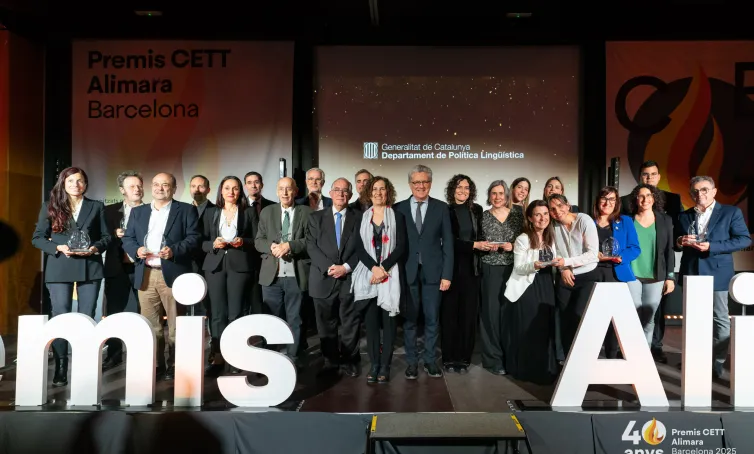National Day of Catalonia | Three Historical Memory Sites to Celebrate Catalonia's Uniqueness
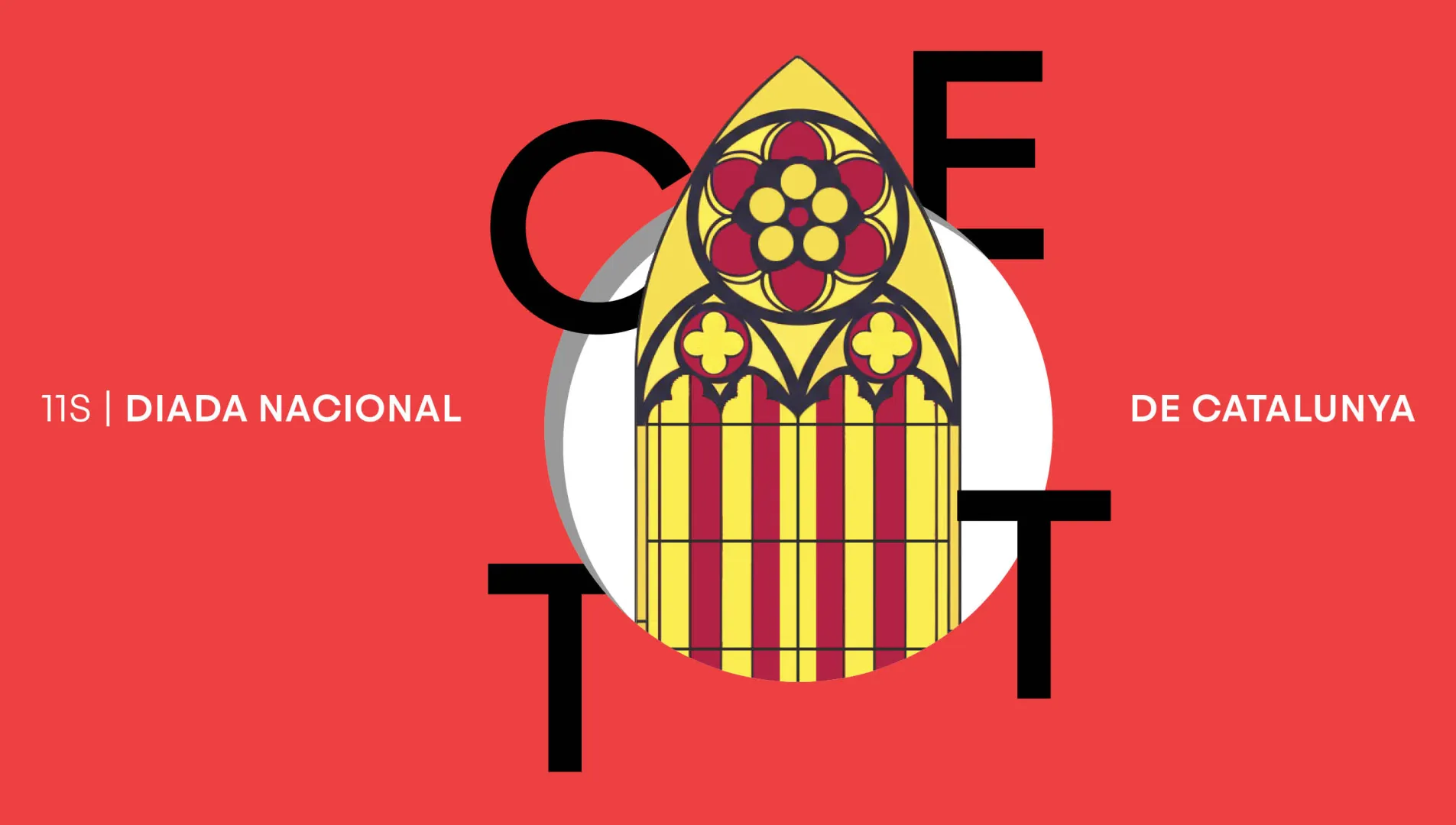
As every year, on September 11 we commemorate the National Day of Catalonia, and this year we do so by proposing a route through three monasteries that preserve the country’s memory.
The national holiday, recognized by Law 1/1980, connects the remembrance of the past with the present and future of Catalan culture. It commemorates and pays tribute to the defense of Barcelona during the 14-month siege it suffered in the context of the War of Spanish Succession between the Bourbons and the Habsburgs.
However, Catalonia’s geography is full of sites that highlight the country’s national past through both contemporary memory and medieval legacy. In this article, the Dr. Jordi Arcos, CETT-UB Research Director, propose a route through three monasteries that reflect Catalonia’s uniqueness over time and help us better understand our history.
Monastery of Santa Maria de Ripoll
The senyera, four red bars on a golden background, finds its legendary origin in the figure of Guifré el Pelós. According to legend, the French emperor Louis dipped four fingers in the blood of the Count of Barcelona and drew them across a shield he granted him in recognition of his bravery. Beyond the myth, Guifré was the first Count of Barcelona to establish hereditary succession, distancing the County of Barcelona from the authority of the Frankish kings and initiating a dynasty of its own.
Today, his tomb can be visited at the Monastery of Santa Maria de Ripoll, which he founded in the 9th century. Located in the Ripollès region, at the foot of the Pyrenees, it houses not only Guifré’s tomb—renovated in 1982—but also those of some of his descendants. As such, the monastery remains a symbol and cradle of a political and cultural legacy that spans over a thousand years.
Royal Monastery of Santa Maria de Poblet
From the pre-Pyrenean landscape of Ripollès, we move to the lands of Conca de Barberà, in what is known as New Catalonia, during a time of expansion and growing influence of the Crown of Aragon. Here lies the Royal Monastery of Santa Maria de Poblet. Founded in 1151 by Cistercian monks and declared a UNESCO World Heritage Site, it symbolizes the institutionalization of Catalonia’s political power, with a royal pantheon housing key figures in Catalan history such as Peter the Ceremonious, Martin the Humane, and James the Conqueror.
Visitors to Poblet can view the royal pantheon sculptures created by Frederic Marès and learn about the individuals who reinforced Catalan identity and sovereignty during Mediterranean expansion—figures who, for the first time, projected the Catalan language beyond its place of origin.
Royal Monastery of Santa Maria de Santes Creus
The Royal Monastery of Santes Creus is located in the municipality of Aiguamúrcia (Alt Camp) and is the other great royal pantheon of Catalonia. Founded in 1150 near Barcelona, it was relocated in 1160 to its current site and began a period of expansion and close ties with the nobility.
Here lie the tombs of notable figures from the Crown of Aragon. One lesser-known figure buried here is Margaret of Prades, the second wife of Martin the Humane, the last king of the House of Barcelona, who died without an heir. This led to the Compromise of Caspe, which sought a new royal lineage and marked the beginning of the Trastámara dynasty—an inflection point in Catalan history. This shift caused a power imbalance with Aragon and Castile and sparked struggles for autonomy that would be echoed in the Reapers' War, and the War of Succession, which culminated in the Siege of Barcelona mentioned at the start of this article.
Catalonia’s National Day is a great occasion to explore the region and discover, through sites of national memory, other episodes that are linked to the events of September 11. These places allow us to unfold Catalonia’s thousand-year-old history, which still resonates through the landscape, memory, and language of its people.
